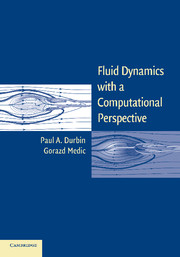3 - Creeping Flow
Published online by Cambridge University Press: 28 January 2010
Summary
The terminologies creeping flow, Stokes flow, or low Reynolds number hydrodynamics are used synonymously to refer to flows in which inertia is negligible compared to viscous and pressure forces. The formal requirement is that the Reynolds number be small: Re ≪ 1. However, in practice the low Reynolds approximation often remains satisfactory for Reynolds of order unity: Re ∼ 1.
With inertia neglected, momentum is transported by viscous diffusion but not by convection. Some ideas about fluid dynamics must be rethought in this limit. Without convection, there is no wake on the downstream side of an object; pressure scales on viscosity not on kinetic energy; when they occur, eddies are as likely upstream as downstream of a blunt body.
Low Reynolds number can mean highly viscous; hence, one can imagine objects moving through syrupy fluid or syrupy fluid being pumped through a conduit. The dominant forces are frictional in origin. Of course, low Reynolds number can also mean very low velocity or very small scale. One application of creeping flow is to locomotion of microorganisms through a fluid. These animals are a few microns in size. They do not move by propulsion; they drag themselves through the fluid, pushing or pulling by frictional forces. In some cases, they use spiral flagella to corkscrew themselves along. On their relative scale, the fluid appears to be very viscous. One can imagine pushing against a very thick fluid to move forward. To do so, the frictional force pushing forward must be greater than the frictional force resisting motion. Swimming is possible if the organism can produce motions that create more pushing friction than impeding friction.
- Type
- Chapter
- Information
- Fluid Dynamics with a Computational Perspective , pp. 108 - 131Publisher: Cambridge University PressPrint publication year: 2007
- 1
- Cited by



